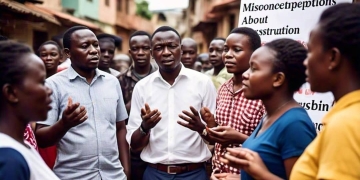
President Yoweri Museveni on Friday evening received the Secretary General of the Africa Continental Free Trade Area (ACFTA), Wamkele Mene, who paid a courtesy call on him at State Lodge, Nakasero.
The President and his guest expressed the need to have viable infrastructure, especially the railway network cutting across the continent that will facilitate and ease trade among the African countries.
“How can we trade when we don’t have infrastructure?” the President wondered.
H.E Wamkele, whose head office is in Accra, the capital city of Ghana, noted that he is keen to see African Continental trade develop citing Uganda as one of the countries doing well in East Africa.
“Sixty percent of Uganda’s’ trade is in East Africa,” he observed.
The visiting Secretary General was accompanied by the Ugandan Minister of Trade and Industry, Francis Mwebesa and other Government officials.
The African Continental Free Trade Area (AfCFTA) is a free trade area encompassing most of Africa.
It was established in 2018 by the African Continental Free Trade Agreement, which has 43 parties and another 11 signatories, making it the largest free-trade area by number of member states, after the World Trade Organization, and the largest in population and geographic size, spanning 1.3 billion people across the world’s second largest continent.
The agreement founding AfCFTA was brokered by the African Union (AU) and signed by 44 of its 55 member states in Kigali, Rwanda on 21 March 2018.
The proposal was set to come into force 30 days after ratification by 22 of the signatory states.
On 29 April 2019, the Saharawi Republic made the 22nd deposit of instruments of ratification, bringing the agreement into force on May 30; it entered its operational phase following a summit on 7 July 2019, and officially commenced 1 January 2021.
Under the agreement, AfCFTA members are committed to eliminating tariffs on most goods and services over a period of 5, 10, or 13 years, depending on the country’s level of development or the nature of the products.
General long-term objectives include creating a single, liberalised market; reducing barriers to capital and labor to facilitate investment; developing regional infrastructure; and establishing a continental customs union.
The overall aims of AfCFTA are to increase socioeconomic development, reduce poverty, and make Africa more competitive in the global economy.
The United Nations Economic Commission for Africa estimates that AfCFTA will boost intra-African trade by 52 percent by 2022.
A report by the World Bank anticipates that AfCFTA could lift 30 million Africans out of extreme poverty, boost the incomes of nearly 70 million people, and generate $450 billion in income by 2035.
On January 13, 2022, AfCFTA took a major step towards its objective with the establishment of the Pan-African Payments and Settlements System (PAPSS), which allows payments among companies operating in Africa to be done in any local currency.



















